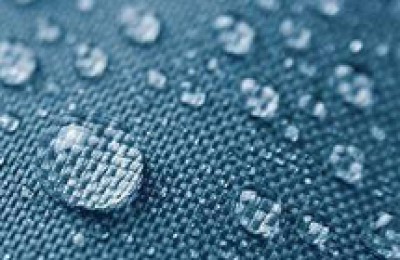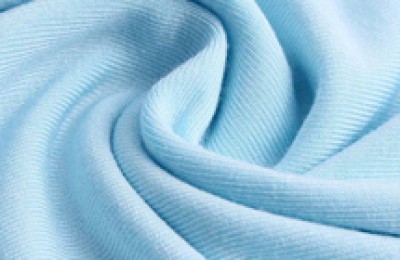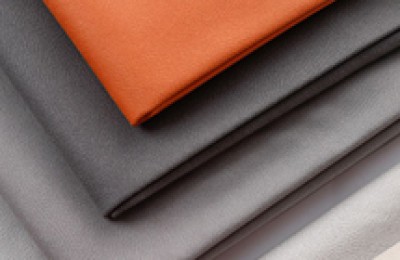The global supply chain crisis under the epidemic has brought a large number of return orders to China’s textile industry. According to statistics from the General Administration of Customs, national textile and clothing exports in 2021 were US$315.47 billion (this caliber does not include mattresses, sleeping bags and other bedding), a year-on-year increase of 8.4%, reaching a historic high. Among them, clothing exports for the whole year were US$170.26 billion, a year-on-year increase of 24%. Thanks to favorable factors such as the recovery of external demand and the return of orders caused by the epidemic, China’s clothing exports once again stood at the US$170 billion mark after five years.
Looking specifically at exporting countries, China’s apparel exports to the three major export markets of the United States, the European Union, and Japan increased by 36.7%, 21.9%, and 6.3% respectively in 2021, and exports to South Korea and Australia increased by 22.9% and 29.5% respectively.
The status of the United States as my country’s largest textile and apparel export market remains stable. In 2021, my country’s apparel exports to the United States exceeded US$40 billion for the first time, setting a record high of US$41.13 billion.
export growth
Profits have declined
Despite having a clothing export volume of more than 170 billion US dollars, data from the National Bureau of Statistics shows that the operating profit margin of the export clothing industry in 2021 is less than 5%. Affected by factors such as rising raw material prices, the overall profit level has continued to decline in recent years.
The global supply chain crisis during the epidemic has brought a large number of reshoring orders to China’s textile industry. Why has the reshoring of orders failed to increase the company’s profit level?
In this regard, Professor Zhu Ping of the School of Textile and Clothing of Qingdao University analyzed that due to the impact of the epidemic, the economy of importing countries has been affected, and the quotations of domestic enterprises cannot increase; secondly, due to the rise in raw material prices, the contract prices negotiated by enterprises cannot be increased, resulting in low profits. , not even making money.
Order return
Not a “good” business?
Fabric orders on hand are about two and a half months, and garment orders on hand remain at 3 to 4 months. This is an announcement recently issued by listed company Lutai A. The person in charge of the company said that in December 2021 and January this year, the company’s orders increased significantly, the off-season is not weak, and the order-taking speed and order volume are in a relatively good period in history. At present, the company has ample orders on hand. Judging from the current number of employees, the company’s production capacity has been dynamically saturated.
Many textile companies have reported a significant increase in orders. Zhu Ping said that the reason for the substantial increase in orders is mainly due to the epidemic. The processing capacity of countries with concentrated textile and garment manufacturing such as India, Vietnam, Pakistan, and Bangladesh has been hindered. However, my country has benefited from the first-mover advantage of being the first to restore production capacity, so it has given Our exports bring opportunities.
However, the increase in orders is also accompanied by rising raw material prices. Data shows that in 2021, the price of 3128B lint cotton at the beginning of the year was 14,981 yuan/ton, and at the end of the year, the price reached 22,206 yuan/ton, an increase of 48.23%.
From February 7th to 11th, the first week after the Spring Festival, the average settlement price of the main contract of the Intercontinental Exchange Cotton Futures (ICE) in the United States was 124.93 cents/pound, an increase of 3.13 cents/pound, or 2.6%, from the previous week.
The sharp rise in foreign cotton prices has also led to a rise in domestic cotton prices. In the first week after the Spring Festival this year, the average settlement price of the main cotton futures contract on the Zhengzhou Commodity Exchange was 21,842 yuan/ton, an increase of 176 yuan/ton or 0.8% from the previous week. At the same time, the price of polyester staple fiber has also increased with the price of raw material PTA.
“Although there are many orders, it is not a good business. Many orders cannot be accepted because they do not make money.” During the interview, people in charge of many companies said that although orders have increased, the profitability of the companies in 2021 is not good. Wang Desheng, general manager of Guangdong Foshan Ligao Garment Co., Ltd., once said that the factory’s orders in mid-2021 have been scheduled to the end of the year, and orders from Australia have even been scheduled to 2022.
However, data from the National Bureau of Statistics show that the operating profit margin of the export apparel industry in 2021 is less than 5%. Relevant experts said that due to factors such as rising raw material prices, the overall profit level has continued to decline in recent years.
Increasing revenue without increasing profits has become a difficult problem facing textile enterprises. Wan Gang, deputy general manager of Qingdao Jifa Group Co., Ltd., said that rising raw material prices have a greater impact on the company’s production and operation activities. “Since the settlement is based on the pre-agreed contract price, the unit price of the company’s export products currently changes slightly, and it is highly likely that the price of the company’s products will rise in the future.” Wan Gang said.
Industrial Transfer
Trend
The return of orders brought about by the capacity substitution effect during the epidemic may not be sustainable.
Ernst & Young consulting services partner Zhou Liang believes that the recovery of the domestic apparel manufacturing industry during the epidemic is “false prosperity”: “Sooner or later, the epidemic will pass, and China will still have to return to the original track.
As countries such as Southeast Asia resume work and production, orders that previously returned to China have begun to be transferred back to Southeast Asia. Data show that in December 2021, Vietnam’s clothing exports to the world increased by 50% year-on-year, and exports to the United States increased by 66.6%.
The Bangladesh Garment Manufacturers and Exporters Association (BGMEA) said that in December 2021, the country’s ready-made garment shipments increased by approximately 52% year-on-year to US$3.8 billion. Bangladesh’s total apparel exports will still increase by 30% in 2021.
The epidemic has slowed down the transfer of the textile industry to Southeast Asia and other countries, but as the epidemic is gradually brought under control, global textile and apparel manufacturing will continue to accelerate its transfer to Southeast Asia and other places.
The manufacturing cost of a T-shirt in China is five times that of Southeast Asia. A person in the clothing industry said: “A pure cotton T-shirt produced in Bangladesh costs less than 1 US dollar for local raw materials and labor. It sells for 5 US dollars in discount stores in European and American terminal markets. -8 US dollars, while the labor cost of producing a T-shirt with the same raw materials in Guangdong is more than 5 US dollars, and the market price has to be doubled.”
China’s market share in major importing countries is declining year by year. From January to November 2021, according to statistics from importing countries (regions), China’s share of imported clothing from the United States and Japan was 30.6% and 56.9% respectively, down 8.5 and 1.8 percentage points respectively from the high point in 2020. Even compared with the epidemic In 2019, the US market share also dropped by 2.6 percentage points. In 2009, the share of Chinese clothing imported into the two major markets of the United States and Japan accounted for 36.6% and 82.9% respectively.
below the turning point
Force companies to innovate faster
For textile companies, the days of relying on OEM export orders are facing changes.
In the traditional clothing industry, factory scale capability is the most important measure of strength. Most factories maintain their profits for a year by taking OEM orders from well-known overseas clothing brands. This has resulted in the current situation where factories “rely on overseas brands to survive.” Annual success or failure depends entirely on whether there are “big orders.”
But things are different now. Under the epidemic, the textile industry is also entering a new development turning point.
In 2021, China’s clothing exports hit a record high. Due to the gradual transfer of industries, the labor cost advantages of Southeast Asian and other countries have expanded their comparative advantages in the field of textile and apparel foreign trade. In the long term, China’s overall apparel foreign trade will be under pressure.
On the one hand, the return of production capacity brought about by the epidemic may not be sustainable; on the other hand, blindly immersing in the low value-added development model of the past is a waste of national resources by enterprises. “Blinally accepting the return of production capacity from Southeast Asia and processing products is still following the old path of a large manufacturing country and being at the bottom of the industrial value chain.” Liu Yingfan said.
Zhu Ping said that the reduction in exports of such products processed by domestic companies is not necessarily a bad thing. On the one hand, it can accelerate the elimination of backward production capacity; on the other hand, it can force enterprises to innovate and move closer to high value-added production.
Liu Yingfan said that the industry has basically formed a consensus that the demand for fragmented orders will increase in the future, and quick returns for small orders have become a way out for leading small clothing factories.
Breakthrough design and branding
Break the survival dependence on low-value orders
“The shortcoming of our textile industry is still in creative design.” Yang Weidong, general manager of Jifa Group, said that under the new situation, clothing brand is not Jifa’s strength, and creative design is not Jifa’s strength. The only thing that can make breakthroughs is technology. Improve the added value and technological content of products through technology.
Recently, the R&D personnel of Jifa Group are stepping up their efforts to optimize the process of supercritical carbon dioxide water-free dyeing technology, striving to achieve an annual production capacity of related products exceeding 1,000 tons. This technology uses carbon dioxide as the dyeing medium to achieve no sewage discharge in the dyeing process. It can save 100 tons of water for every ton of cloth dyed, achieving a disruptive innovation in traditional water-printed dyeing technology.
In Yang Weidong’s view, waterless dyeing technology will achieve good benefits in the future. Today’s young people are paying more and more attention to the technological content of clothing and are willing to pay a higher price to buy clothing with a higher sense of technology.
Not only is it an immediate development, it is consumer demand-oriented and technological innovation is the core. Through personalized design, brand management, etc., more and more Qingdao textile and garment companies are turning in this direction.
Zhu Ping believes that in terms of fabric production, my country’s functional fiber raw materials and functional fabric processing capabilities are weak; there is also a big gap with developed countries in product design, and there are few independent clothing brands. The rise of the new national trend has made many domestic clothing companies pay more attention to the “cultural added value” of their products.
</p






